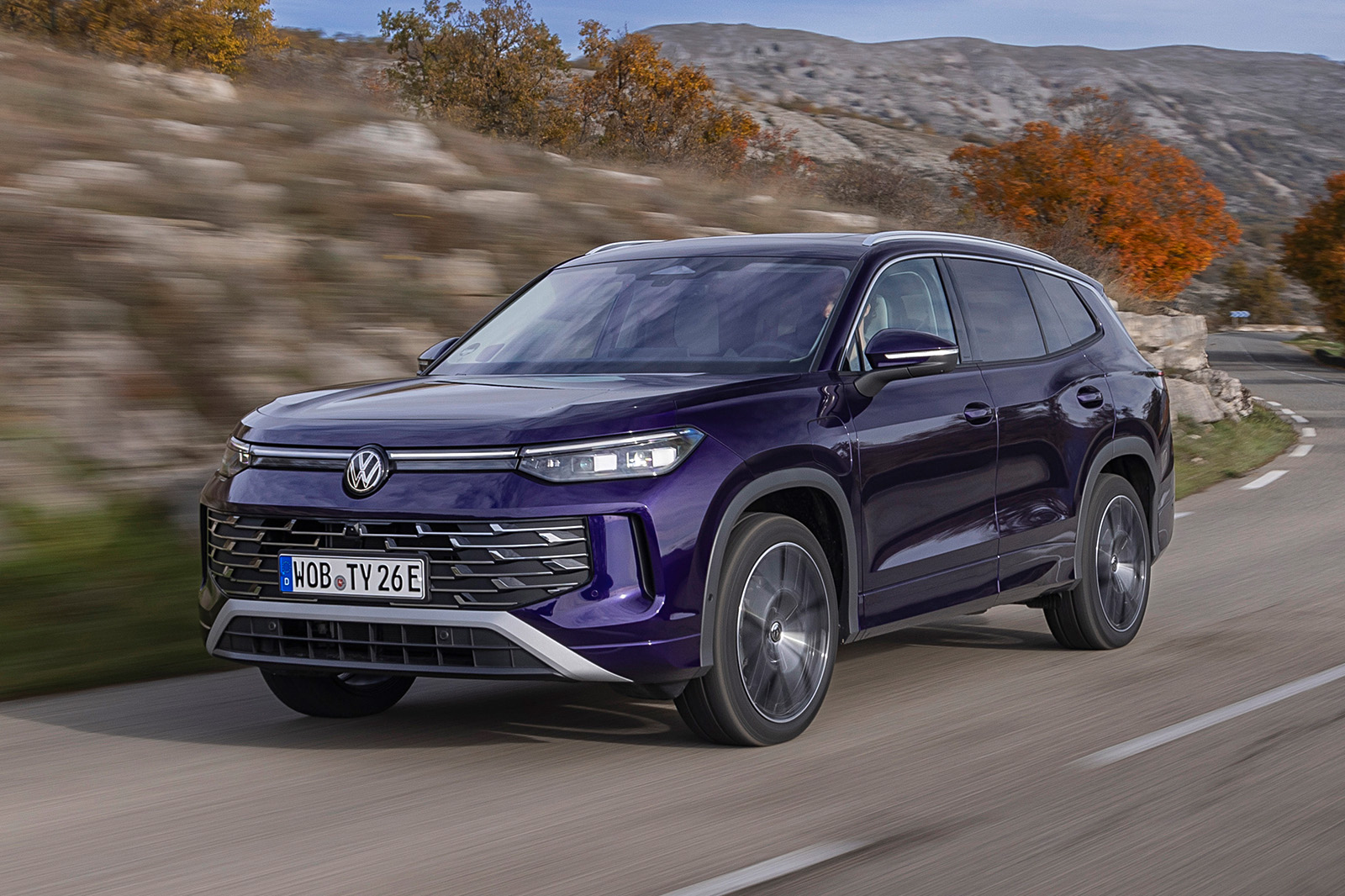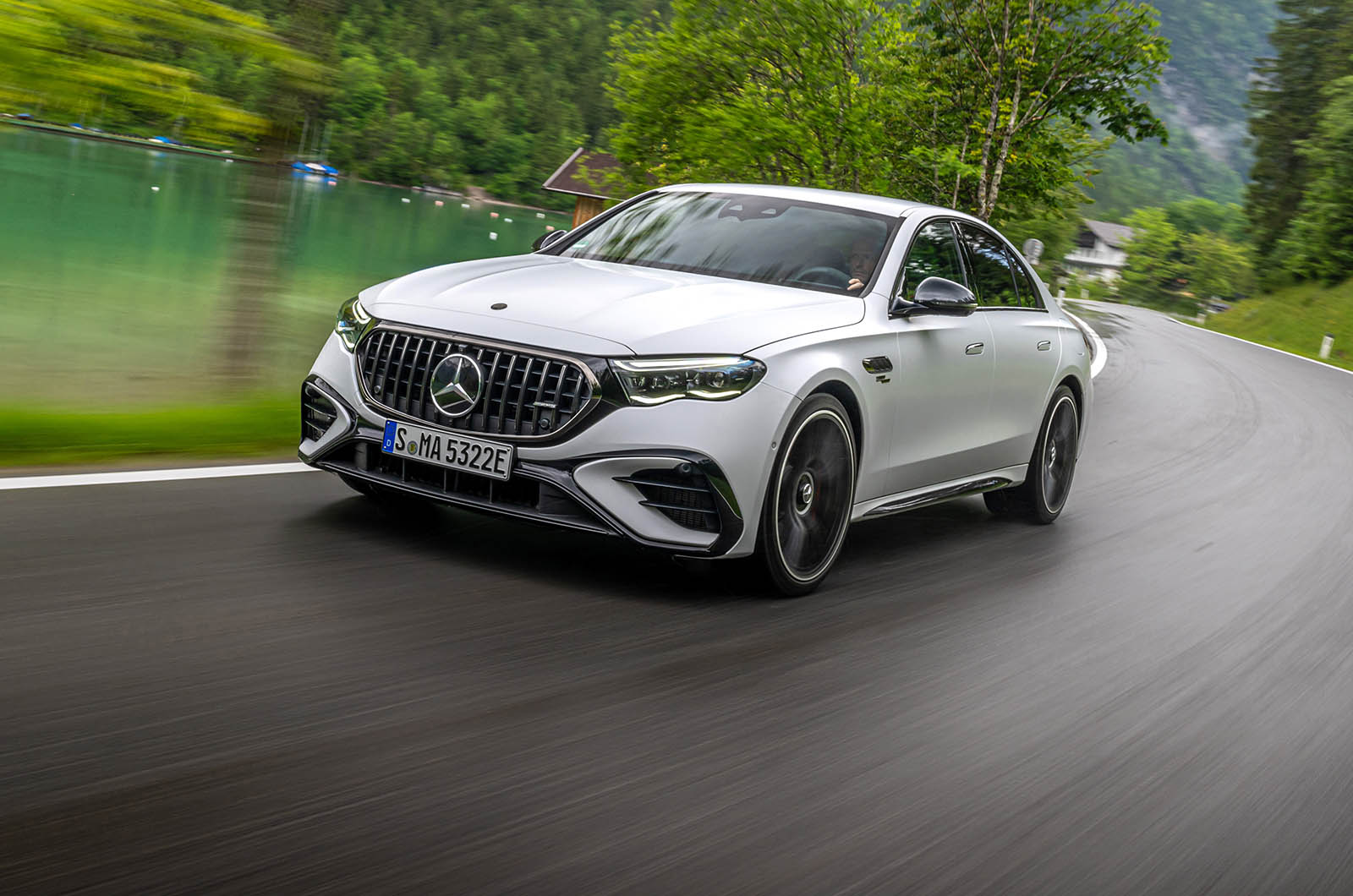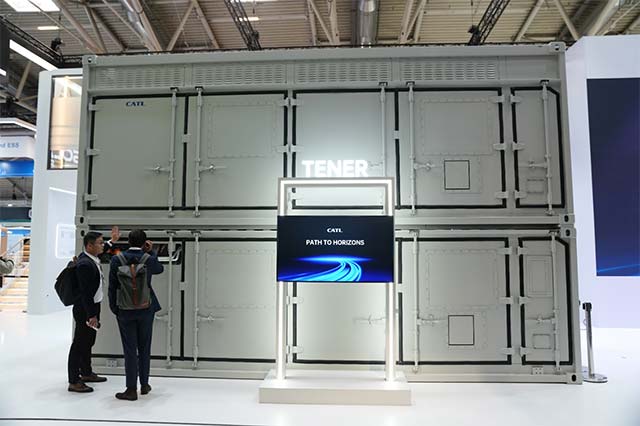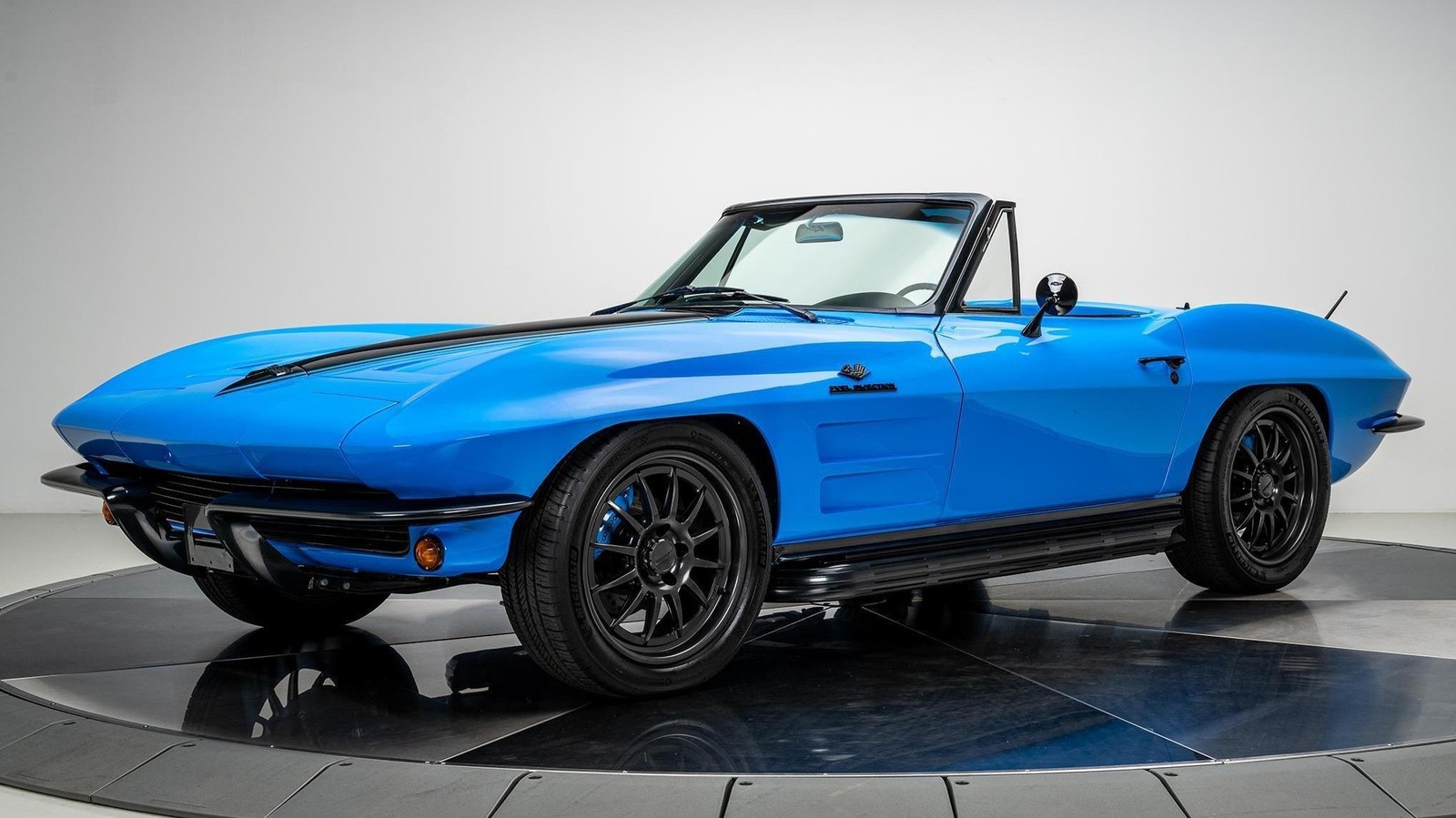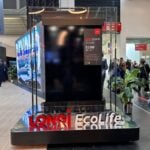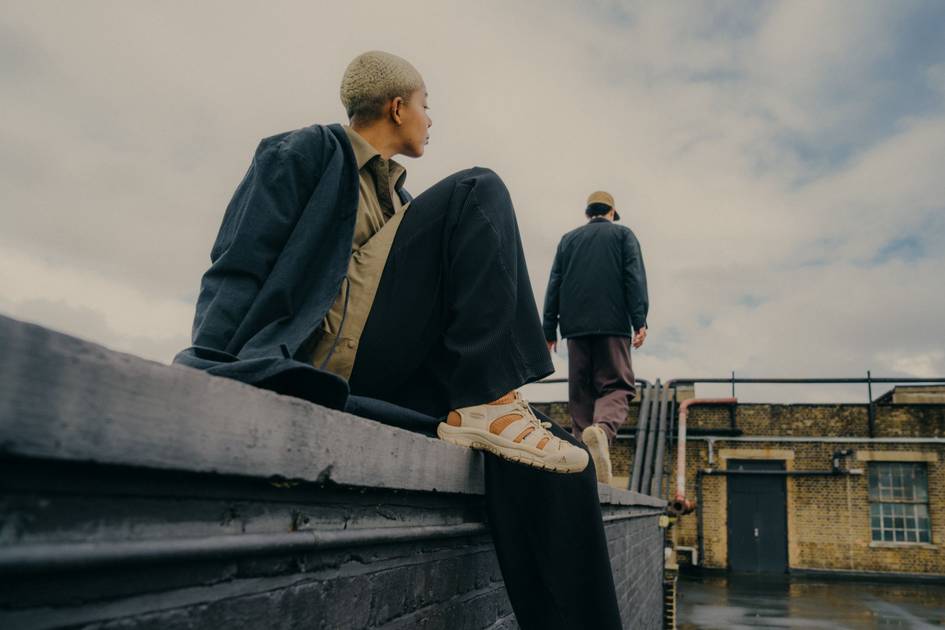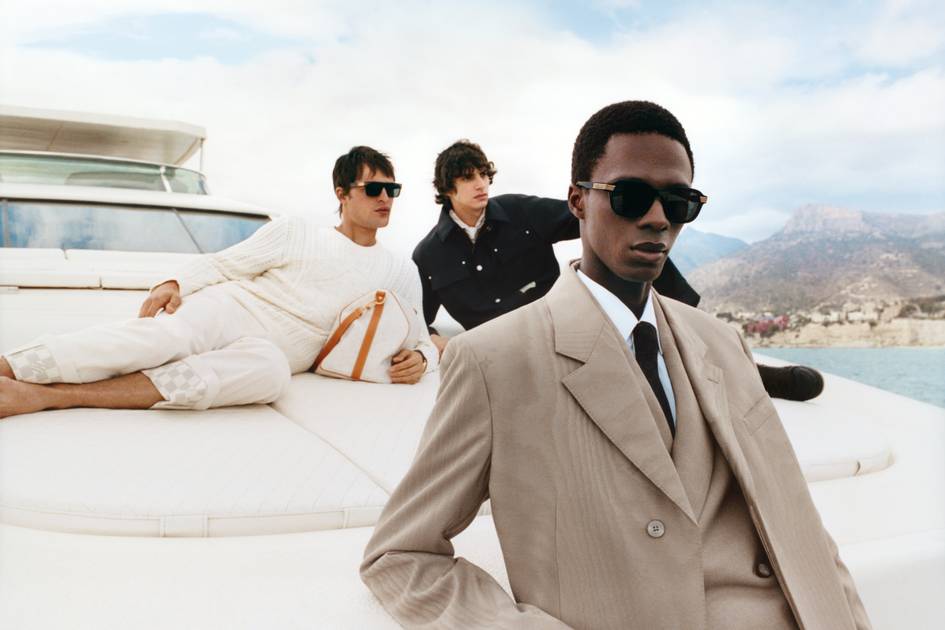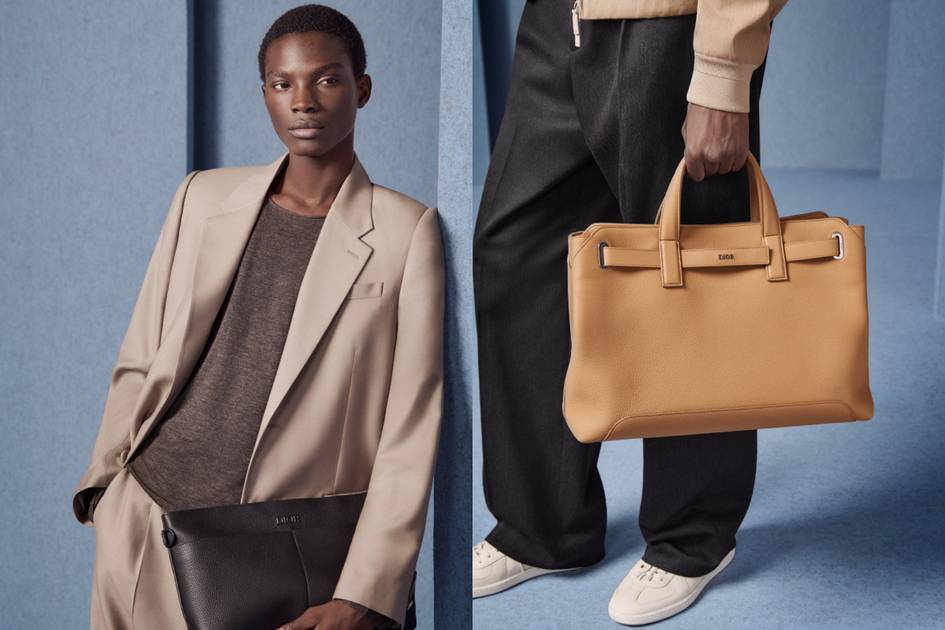How to make it in China - a strategic guide for fashion brands
Louis Vuitton flagship store in Shanghai, China Credits: © Gang Wang | Dreamstime.com report If you're looking to launch or expand a fashion business in China, this guide covers all the essentials of the Chinese fashion market. It breaks down key aspects, from consumer preferences and shopping habits to e-commerce trends and sustainability. Chapter 1 : Chinese weather, fashion style & culture Chapter 2: The Economy, Purchasing Power, and Clothing Consumption Chapter 3: Statistics on the Fashion Industry in China Chapter 4. Shopping Chapter 5. Sustainability Chapter 6. E-commerce in China China, a land of striking contrasts, is home to a fashion market as vast and diverse as its geography. From the frostbitten streets of Harbin to the sun-drenched shores of Hainan, consumer preferences shift dramatically with the seasons. But beyond climate, China’s fashion industry thrives at the intersection of cultural heritage, digital innovation, and evolving social aspirations. In 2024, retail sales in the country grew by 3.5 percent, reaching 48.8 trillion yuan (6.7 trillion dollars), a slower pace compared to the 7.2 percent growth seen in the previous year, as reported by the National Bureau of Statistics. In 2024, retail sales in the country rose by 3.5 percent, reaching 48.8 trillion yuan (approximately 6.7 trillion dollars)—a slowdown from the 7.2 percent growth recorded the previous year, according to the National Bureau of Statistics. Depending on the source, China accounts for between one-fifth and one-third of the global fashion market. For brands looking to succeed, operating within this landscape requires more than just market entry—it demands deep insight into regional trends, seasonal shifts, and the power of e-commerce and social commerce. This guide unpacks the strategies that resonate with Chinese consumers, helping brands tap into one of the world’s most active and shifting fashion markets. Chapter 1 : Chinese weather, fashion style & culture 1.1 Understanding China’s climate & fashion needs China’s immense geographical diversity creates a wide range of climate conditions, directly influencing consumer fashion preferences. Brands that successfully penetrate the market recognize that a one-size-fits-all approach does not work. Instead, they adapt by offering climate-appropriate collections that align with both seasonal demands and regional expectations. The country’s vast expanse means that fashion choices vary significantly between the frigid winters of the north and the humid, subtropical conditions of the south. 1.2 Northern China (Beijing, Harbin, Shenyang): the cold belt In northern cities such as Beijing, Harbin, and Shenyang, where temperatures can plummet below -15°C (5°F), consumers prioritize warmth and durability above all else. Practicality is essential, but style remains a key factor in purchasing decisions. The most successful brands in this segment are those offering high-quality insulated clothing that can withstand extreme cold while maintaining an aesthetic appeal. Bosideng, China’s leading down jacket brand, has established itself as a dominant player in the winter apparel market, competing with global giants like Canada Goose and Moncler by continuously investing in research and development for advanced thermal technology and collaborating with international designers. Similarly, Uniqlo has gained a strong foothold with its affordable yet effective HeatTech line, notes Daxue Consulting, which provides lightweight but highly insulating fabrics. On the premium end, Erdos, a renowned cashmere and wool brand, appeals to consumers who seek both warmth and luxury. 1.3 Central China (Shanghai, Chengdu, Chongqing): the transitional zone In central regions such as Shanghai, Chengdu, and Chongqing, the climate is more moderate, with winters that are cool rather than harsh and summers that are hot and humid. Here, versatility is key, and consumers gravitate toward lightweight layering options that can adapt to fluctuating temperatures. Brands that perform well in this market offer breathable fabrics and adaptable styles suitable for both work and leisure. Icicle, a Chinese brand known for its commitment to sustainable fashion, has built a strong reputation by using natural fibers such as linen and silk, which are highly valued for their comfort in humid conditions, explains Just Style. Fast-fashion brands like Zara and H&M also thrive in these areas, where urban consumers appreciate the accessibility of stylish yet practical transitional pieces. 1.4 Southern China (Guangzhou, Shenzhen, Hong Kong): the heat zone Further south, in cities like Guangzhou, Shenzhen, and Hong Kong, the climate is predominantly warm and humid throughout the year, with winter temperatures rarely dropping below 13°C (55°F). Consumers in these regions prioritize comfort, seeking lightweight, breathable fabrics that offer moisture-wicking properties and UV protection. Airy silhouettes and loose-fitting garm
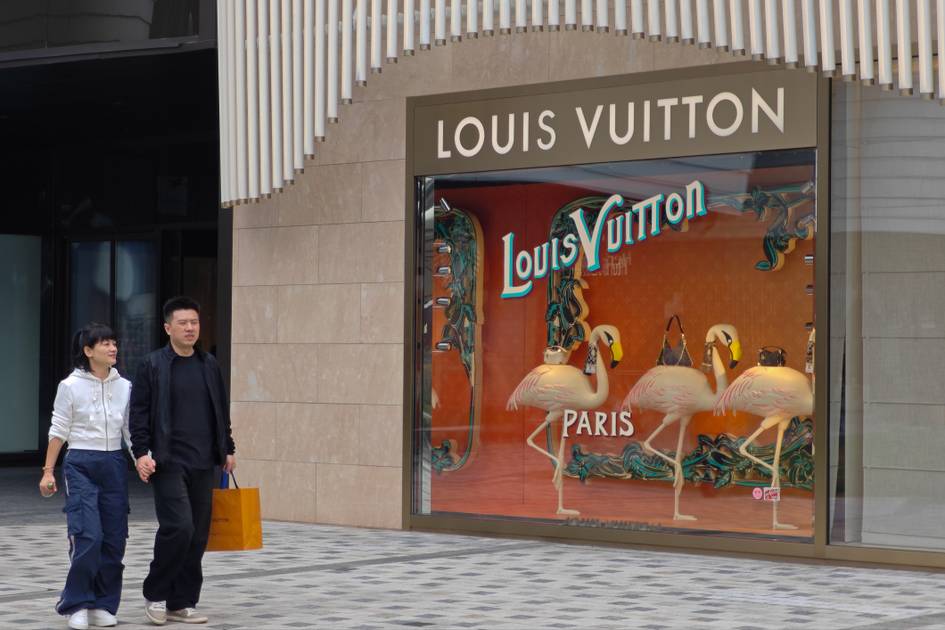
report
If you're looking to launch or expand a fashion business in China, this guide covers all the essentials of the Chinese fashion market. It breaks down key aspects, from consumer preferences and shopping habits to e-commerce trends and sustainability.
- Chapter 1 : Chinese weather, fashion style & culture
- Chapter 2: The Economy, Purchasing Power, and Clothing Consumption
- Chapter 3: Statistics on the Fashion Industry in China
- Chapter 4. Shopping
- Chapter 5. Sustainability
- Chapter 6. E-commerce in China
China, a land of striking contrasts, is home to a fashion market as vast and diverse as its geography. From the frostbitten streets of Harbin to the sun-drenched shores of Hainan, consumer preferences shift dramatically with the seasons. But beyond climate, China’s fashion industry thrives at the intersection of cultural heritage, digital innovation, and evolving social aspirations. In 2024, retail sales in the country grew by 3.5 percent, reaching 48.8 trillion yuan (6.7 trillion dollars), a slower pace compared to the 7.2 percent growth seen in the previous year, as reported by the National Bureau of Statistics.
In 2024, retail sales in the country rose by 3.5 percent, reaching 48.8 trillion yuan (approximately 6.7 trillion dollars)—a slowdown from the 7.2 percent growth recorded the previous year, according to the National Bureau of Statistics. Depending on the source, China accounts for between one-fifth and one-third of the global fashion market. For brands looking to succeed, operating within this landscape requires more than just market entry—it demands deep insight into regional trends, seasonal shifts, and the power of e-commerce and social commerce. This guide unpacks the strategies that resonate with Chinese consumers, helping brands tap into one of the world’s most active and shifting fashion markets.
Chapter 1 : Chinese weather, fashion style & culture
1.1 Understanding China’s climate & fashion needs
China’s immense geographical diversity creates a wide range of climate conditions, directly influencing consumer fashion preferences. Brands that successfully penetrate the market recognize that a one-size-fits-all approach does not work. Instead, they adapt by offering climate-appropriate collections that align with both seasonal demands and regional expectations. The country’s vast expanse means that fashion choices vary significantly between the frigid winters of the north and the humid, subtropical conditions of the south.
1.2 Northern China (Beijing, Harbin, Shenyang): the cold belt
In northern cities such as Beijing, Harbin, and Shenyang, where temperatures can plummet below -15°C (5°F), consumers prioritize warmth and durability above all else. Practicality is essential, but style remains a key factor in purchasing decisions. The most successful brands in this segment are those offering high-quality insulated clothing that can withstand extreme cold while maintaining an aesthetic appeal. Bosideng, China’s leading down jacket brand, has established itself as a dominant player in the winter apparel market, competing with global giants like Canada Goose and Moncler by continuously investing in research and development for advanced thermal technology and collaborating with international designers. Similarly, Uniqlo has gained a strong foothold with its affordable yet effective HeatTech line, notes Daxue Consulting, which provides lightweight but highly insulating fabrics. On the premium end, Erdos, a renowned cashmere and wool brand, appeals to consumers who seek both warmth and luxury.
1.3 Central China (Shanghai, Chengdu, Chongqing): the transitional zone
In central regions such as Shanghai, Chengdu, and Chongqing, the climate is more moderate, with winters that are cool rather than harsh and summers that are hot and humid. Here, versatility is key, and consumers gravitate toward lightweight layering options that can adapt to fluctuating temperatures. Brands that perform well in this market offer breathable fabrics and adaptable styles suitable for both work and leisure. Icicle, a Chinese brand known for its commitment to sustainable fashion, has built a strong reputation by using natural fibers such as linen and silk, which are highly valued for their comfort in humid conditions, explains Just Style. Fast-fashion brands like Zara and H&M also thrive in these areas, where urban consumers appreciate the accessibility of stylish yet practical transitional pieces.
1.4 Southern China (Guangzhou, Shenzhen, Hong Kong): the heat zone
Further south, in cities like Guangzhou, Shenzhen, and Hong Kong, the climate is predominantly warm and humid throughout the year, with winter temperatures rarely dropping below 13°C (55°F). Consumers in these regions prioritize comfort, seeking lightweight, breathable fabrics that offer moisture-wicking properties and UV protection. Airy silhouettes and loose-fitting garments dominate wardrobes, and brands that focus on stylish yet climate-appropriate materials tend to perform well. Uniqlo’s Airism line, designed for breathability and quick drying, has been particularly successful in this market. Luxury and premium brands such as Icicle and COS have also found strong demand among consumers who appreciate minimalist, high-quality fashion made from organic fabrics suited to year-round heat.
1.5 Tropical China (Hainan, Yunnan, Guangxi): the resort market
In tropical regions such as Hainan, Yunnan, and Guangxi, where winter is virtually nonexistent, the market is driven by resort wear and lightweight clothing suitable for a hot climate. Demand for swimwear, linen dresses, and breathable summer outfits remains consistent throughout the year, especially in tourist-heavy destinations like Hainan, which has become a major duty-free shopping hub for luxury brands. Hermès and Louis Vuitton have expanded their resort collections to cater to this growing market, while local boutique brands specializing in linen and silk-based fashion are thriving among both domestic and international tourists.
1.6 Seasonal fashion cycles: the impact on retail
The Chinese fashion market follows a two-season calendar—spring/summer and fall/winter—just like fashion businesses in the West. However, local trends, consumer behavior, and retail strategies often differ, requiring brands to adapt accordingly. Extreme climate variations across the country and the dominance of seasonal retail cycles play a significant role in shaping consumer demand.
In colder regions, winter fashion represents a major investment, with consumers willing to spend on high-quality coats, boots, and thermal accessories. Luxury brands, in particular, experience peak sales during this period, as shoppers seek both warmth and prestige in their outerwear choices. In contrast, summer shopping is driven by comfort and functionality, leading to a surge in demand for cooling fabrics and breathable materials.
Meanwhile, transitional pieces such as trench coats, cardigans, and lightweight sweaters remain popular across multiple regions, as layering provides flexibility for managing unpredictable seasonal shifts.
China’s Fashion Capitals: Hubs of Design, Innovation, and Manufacturing
1. 7 From Trendsetting Cities to Production Powerhouses
These seasonal dynamics play out differently across China’s major fashion capitals, each of which contributes uniquely to the nation's vibrant fashion scene.
Beijing stands out as a central hub, hosting the biannual China Fashion Week since 1997. This event showcases a diverse range of collections from both established and emerging designers, encompassing ready-to-wear, accessories, and innovative designs. The main venue for these showcases is 751 D·PARK, located at 2 Jiuxianqiao Road, Chaoyang District, Beijing.
Shanghai has also emerged as a significant player in the fashion industry with its own Shanghai Fashion Week. Held semi-annually, this event has grown in prominence, featuring a mix of local talents and international brands. The Autumn/Winter 2025 edition, for instance, took place from March 25 to April 2, 2025, highlighting the city's commitment to fostering fashion innovation.
In terms of manufacturing, cities like Guangzhou and Shenzhen play pivotal roles. Guangzhou, often referred to as the "shoppers' heaven," is renowned for its vast array of shopping centers, malls, and wholesale markets offering quality apparel at competitive prices. Shenzhen, on the other hand, is home to numerous clothing manufacturers, contributing significantly to the production of various garments, including knitwear, woven wear, and sportswear.
Additionally, Sanmen County has emerged as a key production center, specializing in outdoor clothing and now accounting for 60 percent of China’s total outdoor apparel production. With government support, 206 companies in the region have been able to enhance competitiveness and foster innovation. This shift has led to the rise of domestic brands such as Lantu, Dixiang, Mansmoer, and Velociraptor, which have been gaining industry recognition through awards and strategic partnerships.
Beyond these hubs, Nantong in Jiangsu Province focuses on home textiles, reports Ecozymat, while Shaoxing in Zhejiang Province is known for decorative fabrics. Together, these cities reflect China's growing influence across both fashion production and original design, securing its place at the forefront of the global fashion industry.
Cracking the code for fashion success in China
For international brands hoping to succeed in China, adaptability is key. As these cities shape China’s fashion industry through design and production, companies that tailor their collections to specific climate zones—rather than launching a generic nationwide collection—have a higher chance of capturing market share. The success of Uniqlo’s HeatTech and Airism lines demonstrates how brands can effectively cater to both extremes of the Chinese climate by offering specialized product ranges that address seasonal needs. Functionality is another crucial factor, with Chinese consumers increasingly prioritizing climate-adaptive fabrics that offer performance benefits such as insulation, water resistance, moisture-wicking, and UV protection. This growing preference for high-performance materials has contributed to the rise of luxury outdoor brands like Arc’teryx and The North Face, which have successfully positioned themselves as both functional and fashionable choices in China’s activewear market.
Ultimately, the most effective approach for brands looking to succeed in this market is one that blends global expertise with local insights, ensuring that collections are not only market-relevant but also resonate with the unique expectations of Chinese consumers. By aligning their product offerings with China’s diverse climate and evolving fashion landscape, international brands can position themselves for long-term success in one of the world’s most evolving and lucrative fashion markets.
Chapter 2: The Economy, Purchasing Power, and Clothing Consumption
Chinese consumers display a heightened sensitivity to fashion, driven by trends, social status, and a transforming digital landscape. Unlike in the Netherlands, for example, where fashion choices prioritize practicality and comfort, young urban Chinese shoppers gravitate toward statement pieces, bold aesthetics, and trend-driven designs. While younger consumers embrace fast-changing microtrends, wealthier individuals favor luxury brands and timeless styles that reflect the "old money" aesthetic.
Luxury remains a powerful status symbol in China, with brands like Chanel, Hermès, and Louis Vuitton maintaining an almost mythical appeal. At the same time, the understated elegance of brands like Celine and Loro Piana has also gained traction among affluent consumers who favor quiet luxury over conspicuous logos. This divide reflects broader economic and social trends: younger consumers seek individuality through bold fashion statements, while older, wealthier buyers invest in high-quality, enduring pieces.
Sustainability is also becoming a key consideration, challenging the notion that it is solely a Western concern. On the topic, Virginie Dangel, Director of Strategic Development for Southern Europe at Worldpay, stated in an interview for the webTv programme Regards De Dirigeants : “In Europe, we assumed that the 30-50 age group was the most sensitive to sustainability issues in their purchases. However, even in China, sustainability is becoming an important criterion for consumers, illustrating a globally converging dynamic.”
This shift is particularly evident among younger consumers, who increasingly value ethical sourcing, eco-friendly materials, and sustainable production. While sustainability may not yet be the primary purchasing driver, it is an evolving factor brands can no longer ignore.
2.1 Consumption patterns across age groups
The purchasing behaviors of Chinese consumers vary significantly by age, reflecting differences in lifestyle, economic means, and cultural expectations. Young adults (ages 16-24) are the most frequent fashion shoppers, with approximately 69 percent making online purchases at least once a week, according to Statista. This group is heavily influenced by social media trends, peer recommendations, and live commerce. They engage actively with platforms such as Xiaohongshu, WeChat, and Douyin (Chinese TikTok), relying on influencers and Key Opinion Leaders (KOLs) to guide their buying decisions. The rise of live-stream shopping has created a culture of impulse buying, where trending items sell out within hours.
Older adults (ages 55 and above) shop less frequently, with 52 percent making weekly online purchases. However, their purchasing decisions are more deliberate, prioritizing quality, comfort, and brand reputation over fleeting trends. This group is also more likely to favor established domestic brands, appreciating reliability and craftsmanship over novelty.
When it comes to shopping channels, the influence of live commerce is undeniable. Among consumers aged 25-34, approximately 65 percent purchase apparel through live-streaming platforms, while 69 percent of those aged 35-44 engage in similar shopping behaviors. This highlights the importance of real-time, interactive selling techniques in China’s retail landscape. Live commerce not only enables brands to demonstrate product quality and fit but also creates a sense of urgency and exclusivity that drives immediate purchases.
2.2 The cultural influence on fashion choices
While fashion in the Netherlands is dictated by pragmatism—largely influenced by an active, bicycle-centric lifestyle—Chinese consumers make purchasing decisions deeply rooted in cultural values. The role of tradition, symbolism, and national identity remains strong, even in contemporary fashion trends.
The study Chinese Consumers’ Attitudes Towards Clothing that Incorporates Chinese Cultural Elements by Yuan Xi and Jinchi Yip, published in Intellect Discover, highlights that Chinese consumers prefer clothing that blends modern styles with traditional cultural elements rather than purely Western designs. The study identified five key factors influencing this preference:
This trend has led to the resurgence of Hanfu-inspired clothing, reimagined cheongsam (qipao) dresses, and luxury brands incorporating subtle Chinese influences into their collections. For instance, Dior has successfully integrated Chinese motifs into its designs, resonating with both local consumers and international fashion enthusiasts.
2.3 The role of social influence: guanxi and collective fashion
Fashion choices in China are also shaped by social structures and relationships. The concept of Guanxi (关系), a deeply ingrained cultural value, plays a significant role in purchasing behavior. Guanxi refers to a network of social and business relationships built on mutual trust, loyalty, and reciprocity. In the fashion industry, this translates into strong peer influence, where individuals often align their style choices with their social circles.
Beyond fashion, Guanxi plays a crucial role in business strategies, particularly in outsourcing and market entry in China. The Chinese business environment is built on trust and a sense of belonging, making relationships a gradual but essential process. Once established, these connections can provide valuable support, as potential partners often go out of their way to assist those within their Guanxi network. As the industrial services and consulting firm SNECI explains, more than just a network, Guanxi operates as a system of reciprocal favors, where one service at a given moment leads to a return favor in the future. However, unlike strictly transactional exchanges, Guanxi thrives on intentional asymmetry - favors are not necessarily repaid in equal measure but often with an even greater gesture, deepening trust and sustaining long-term relationships. For businesses, a strong Guanxi network can be a powerful asset, particularly when it includes investors who can accelerate growth and market expansion. Many of these connections are cultivated through social platforms like Zhihu, where investors and entrepreneurs actively exchange insights and opportunities, making Guanxi an indispensable tool for long-term success in China.
Seasonal trends in Chinese fashion spending
Chinese consumers follow clear seasonal patterns in their fashion spending, with distinct peak and low periods throughout the year.
2.4 Peak spending periods
The most significant shopping surge occurs around Chinese New Year (January-February) when purchasing new clothing symbolizes a fresh start. During this time, brands capitalize on the festive mood by launching limited collections featuring traditional red, gold, and other auspicious motifs. The 618 Shopping Festival (June 18), originally launched by JD.com, has also become a crucial moment for fashion retail, with consumers taking advantage of substantial discounts on apparel. However, the most significant online shopping event of the year is Singles’ Day (11.11, November 11), an event spearheaded by Alibaba that consistently drives record-breaking fashion sales, particularly among young consumers. As the year progresses, the autumn-winter shopping season (October-December) brings another wave of spending, especially on coats, sweaters, and cold-weather fashion. This period also includes Double 12 (December 12), a shopping event similar to Singles’ Day that attracts another round of high sales.
2.5 Low spending periods
In contrast, spending slows down during certain months. March and April, following the splurge of Chinese New Year, typically see a dip in fashion consumption, as consumers recover financially from holiday expenses. Likewise, July and August are marked by lower spending, as the summer heat reduces the desire for shopping, prompting brands to focus on clearance sales before autumn collections arrive.
Fashion spending by consumer segment
2.6 Young consumers (18-30 years old)
Young consumers are a key driver of the fast-fashion and streetwear market, shopping frequently but in smaller amounts. According to a 2022 survey by Statista, approximately 40 percent of Generation Z consumers in China spend between ¥201 and ¥400 per month on apparel ( 312- 624 euros per year), while around 3.4 percent spend more than ¥1,000 per month (1,560+ euros per year). Their shopping peaks during events like 11.11, the 618 Festival, and summer fashion sales in July, while spending slows after the Chinese New Year. Online platforms such as Taobao, Xiaohongshu, and Tmall heavily influence their purchasing behavior, along with limited-edition collaborations like Nike x Clot and Uniqlo x Kaws. Trends driven by K-pop, anime, and social media also shape their preferences.
2.7 Middle-class professionals (30-45 years old)
While specific spending data for this group is limited, middle-class professionals have a higher disposable income than younger consumers and likely allocate a larger budget to fashion annually. Their shopping behavior is more strategic, with peak spending during events like 11.11, Chinese New Year, 618, and Double 12. They prefer business-casual attire, designer bags, tailored suits, and premium sportswear, balancing online shopping for convenience with in-store purchases for luxury items. Sustainability is an increasing consideration, and brands such as Armani, Hugo Boss, and Zara remain popular choices. Unlike younger consumers, they prioritize quality over quantity, opting for fewer but higher-end purchases.
2.8 Affluent & luxury consumers (45+ years old)
Luxury consumers have distinct spending patterns, with annual expenditures on luxury goods starting at around ¥26,000 (3,328 euros), according to Statista. Their fashion spending peaks before major holidays such as Chinese New Year and the Mid-Autumn Festival, while summer months typically see lower expenditures. This segment favors haute couture, fine jewelry, and high-end leather goods, with a preference for in-store shopping at brands like Chanel, Hermès, and Louis Vuitton. Many also travel to Hong Kong, Paris, or Milan for exclusive shopping experiences. While brand loyalty is high, exclusivity and social status remain primary motivators in their fashion choices.
Key takeaways and market insights
Overall, the Chinese fashion market is dynamic, trend-driven, and highly segmented. Young consumers fuel fast-fashion and streetwear trends with frequent, lower-cost purchases, while middle-class professionals invest in high-quality workwear and international brands. Luxury consumers, meanwhile, maintain a focus on exclusivity and status, prioritizing premium designer labels.
According to Statista, younger consumers account for nearly 48 percent of luxury spending in China, demonstrating their growing financial capacity and brand awareness. Additionally, Bain & Company notes that consumers aged 23 to 38 are not only financially stable but also highly informed about luxury trends, often owning property and investing in designer fashion. The rise of e-commerce has also reshaped shopping behaviors, with platforms such as Alibaba seeing significant growth, as reported by Heuritech.The influence of seasonal shopping events, such as Singles’ Day, has been particularly transformative, with the South China Morning Post confirming that 11.11 has become the world’s largest shopping day by Gross Merchandise Volume, - and bigger than both Black Friday and Amazon's Prime Day combined, adds Forbes - driving record-breaking consumer engagement. As China’s fashion market continues to evolve, brands must manage these spending behaviors carefully, aligning their strategies with both the seasonal and demographic nuances of Chinese consumers.
Chapter 3: Statistics on the Fashion Industry in China
China's fashion and apparel market remains one of the largest and fastest-growing in the world, with significant expansion expected in the coming years. However, shifting economic conditions and changing consumer behaviors continue to influence industry trends.
3.1 Market value and growth projections
As one of the largest economies in the world, China plays a crucial role in shaping global retail and consumption patterns. In 2024, retail sales in the country grew by 3.5 percent, reaching 48.8 trillion Yuan (6.7 trillion dollars), a slower pace compared to the 7.2 percent growth seen in the previous year, as reported by the National Bureau of Statistics. To boost consumption, the Chinese government introduced a new stimulus package worth 300 billion Yuan in early March.
As of 2024, China's apparel market is valued at approximately 383.85 billion euros (2.89 trillion Chinese yen), according to GlobalData. The sector is expected to maintain a compound annual growth rate (CAGR) exceeding 9 percent from 2023 to 2027, driven by strong and consistent demand for fashion products. Statista projects that between 2025 and 2029, China's apparel market will grow by 3.93 percent, reaching an estimated total value of around 386.90 billion euros (399.90 billion US dollars) by 2029. This steady expansion highlights the resilience of China’s fashion market, even amid economic challenges. Note: Exchange rates used for conversions are based on data available as of February 12, 2025. Actual rates may vary, and it's advisable to consult up-to-date sources for precise conversions.
3.2 Per capita clothing expenditure
Consumer spending on apparel continues to rise. In 2024, the per capita consumption expenditure on clothing in China was reported at 202.00 euros (1,521 RMB), marking an increase from 187.83 euros (1,479 RMB) in 2023, according to CEIC Data. This upward trend highlights the growing purchasing power of Chinese consumers, despite economic fluctuations.
3.3 Challenges in the luxury fashion segment
While China’s apparel market shows steady growth, the luxury segment has faced challenges. According to Reuters, global luxury brands have observed a decline in demand, largely due to factors such as:
Chapter 4. Shopping
Chinese consumers exhibit diverse shopping preferences and behaviors, particularly in the context of clothing and fashion. One of the most significant aspects of shopping in China is the preference for large shopping malls. Expansive retail centers attract a vast number of consumers who appreciate the convenience of having numerous brands and entertainment options in one place. According to Jing Daily, a survey of Asia-Pacific consumers found that shoppers in Greater China prefer large-scale malls with a wide variety of retail choices for their shopping excursions.
4.1 What do Chinese consumers value in physical shopping?
Shopping in China is not merely a transactional experience but a social activity, often shared with family and friends. A McKinsey study highlighted that shopping is considered one of the best ways to spend time with loved ones, with over half of respondents identifying it as a preferred activity. This social aspect extends to high-street shopping as well, where consumers, particularly younger generations, enjoy exploring new fashion trends in groups.
In terms of timing, shopping hours in China are highly flexible, with vibrant urban centers accommodating both day and night shopping. Many malls and retail streets remain open late, catering to consumers' diverse schedules and making nighttime shopping a popular activity. This flexibility aligns with the fast-paced lifestyles of Chinese urban dwellers, ensuring that brands and retailers can engage with their target audiences effectively at any hour.
4.2 The rise of multi-brand fashion boutiques
In addition to large shopping malls, there is a growing interest among Chinese consumers in multi-brand fashion boutiques. These curated stores offer a selection of both international and local brands, providing an exclusive shopping experience for fashion-savvy individuals. As Jing Daily reports, these boutiques attract consumers seeking variety and uniqueness in their style choices.
Fashion boutiques distinguish themselves through a curated brand mix that preserves brand equity while appealing to discerning shoppers, states Vogue Business. Personalized shopping experiences are another key attraction, with local brands excelling in providing tailored customer interactions. Besides, many retailers enhance engagement through futuristic shopping environments, AI-driven virtual shopping, and collaborations with key opinion leaders (KOLs), observes Heuritech.
Furthermore, innovative store design plays a crucial role in attracting consumers. Retailers that integrate elements of pop culture, fitness, technology, and interactive experiences into their store layouts tend to resonate more with Chinese shoppers. According to VMSD, an effective retail design and strong visual identity can significantly enhance consumer engagement and create memorable shopping experiences.
Local vs. international brands: what do Chinese consumers prefer?
Chinese consumers exhibit a nuanced approach when it comes to choosing between local and international fashion brands. Their preferences are influenced by factors such as status, quality, cultural identity, and innovation.
4.3 The growing preference for local fashion brands
In recent years, there has been a surge in support for local brands due to a rising sense of national pride and cultural identity. The "Guochao" (国潮) movement, which blends traditional Chinese heritage with modern fashion, has significantly influenced shopping trends. Younger generations, in particular, are drawn to domestic brands that incorporate elements like Hanfu, embroidery, and calligraphy-inspired designs, reports Jing Daily. Brands such as Li-Ning and Anta have gained massive popularity as patriotic alternatives to Nike and Adidas.
Additionally, many local brands offer better fit and style preferences, as they are designed specifically for Chinese body types and climate conditions. Competitive pricing and superior value for money further contribute to the appeal of domestic brands, which often provide high-quality, trendy designs at more accessible price points. To the point that domestic brands now account for 95 percent of the sales in China’s 4.5 trillion Yuan fashion market, while international brands make up only 5 percent, according to estimates by the National Garment Association.
Innovation and digital integration also set Chinese brands apart. Many excel in AI-powered trend analysis, live-streaming sales, and influencer collaborations, leveraging digital platforms to engage consumers. Many brands, such as Shein (though not commercialized in China), have capitalized on this approach, using AI-driven data to predict trends and rapidly produce fashionable clothing.
4.4 The lasting appeal of international brands
Despite the intense competition from domestic brands, there are still opportunities for non-Chinese brands in China’s fashion market, as demonstrated by the experiences of exhibitors at events like Chic. Jun Yang, from Shanghai-based Marcalec Worldwide Distribution Ltd, highlighted the potential by sharing his company’s efforts to bring European childrenswear to China. Marcalec, which works with a vast network of franchises and multibrand stores across 160 Chinese cities, has been importing adult fashion brands valued at one billion Yuan (138 million dollars) in 2024. Starting in June, they plan to introduce kidswear from renowned European brands like Bugatti, Trussardi, and Richmond for the autumn/winter 2025 collections. Yang emphasized that while Chinese consumers are exposed to European brands online and through television, they often lack access to them locally, which is why his company focuses on making these products available in physical retail stores for people to experience firsthand.
This potential for international brands is particularly evident in the luxury sector. Despite the rise of domestic brands, international luxury houses remain highly desirable and continue to dominate the high-end market. Vivienne Westwood, for instance, debuted its Spring/Summer 2025 collection in Shanghai, signaling confidence in China's luxury market. Similarly, Dior and Chanel maintain strong consumer demand through localized marketing strategies, following Macau Business and Vogue Business information.
Streetwear and global fashion trends also influence younger consumers, sustaining demand for brands like Balenciaga, Off-White, and Supreme. Many shoppers purchase international labels abroad or through duty-free stores in Hong Kong, Japan, and South Korea to avoid high import taxes.
4.5 A blended approach: mixing local and global styles
An emerging trend is the fusion of local and international fashion. Consumers mix Western luxury accessories with pieces from rising Chinese designers, creating personalized styles. The Guochao movement has also influenced global brands—Nike, for instance, frequently releases China-exclusive collections for Chinese New Year.
4.6 Trending brands in China: a global-local balance
As of 2025, China's fashion market blends local innovation with international influence. Emerging designers like Zhaoyi Yu, Ruohan, and Dingyun Zhang are gaining recognition for merging traditional craftsmanship with contemporary aesthetics, exposes Jing Daily.
Luxury houses still dominate the high-end market, with brands like Dior and Chanel maintaining strong demand through localized marketing, analyses Macau Business. Meanwhile, Korean brands like We11done and Japanese labels known for minimalism and craftsmanship continue to shape fashion preferences, reflecting the broader influence of Asian design.
The Chinese fashion market in 2025 is a fusion of heritage and modernity, where consumers expect cultural authenticity, craftsmanship, and seamless digital experiences. Success hinges on a brand’s ability to adapt to fast-changing trends while maintaining exclusivity and relevance. Those that master this balance—whether domestic or international—will thrive in one of the world’s most dynamic retail landscapes.
Chapter 5. Sustainability
Sustainability is increasingly influencing Chinese consumers' fashion choices, particularly among younger demographics. According to the study "Profiling Consumers: Examination of Chinese Gen Z Consumers’ Sustainable Fashion Consumption" by Yanbo Zhang, Chuanlan Liu, and Yanru Lyu, published in 2023, found that their engagement in sustainable fashion is shaped by a desire for uniqueness, knowledge about sustainability, and specific fashion consumption patterns. These consumers prioritize high-quality, classic designs, versatility, and stylish appearances in their fashion selections.
Gen Z and Millennials are driving this demand for ethical fashion, seeking brands that use eco-friendly materials and adopt responsible production practices. As highlighted by Daxue Consulting analysis, companies like Icicle and Klee Klee have built strong reputations by focusing on sustainable fabrics, low-impact dyeing techniques, and transparent supply chains, all of which resonate with China’s growing base of environmentally conscious shoppers. While sustainability remains a secondary consideration for many mainstream consumers, brands that incorporate both sustainability and practicality into their product lines stand to gain a competitive edge.
The sustainable fashion market in China is experiencing growth. The resale sector, especially for luxury goods, is expanding rapidly, with projections estimating it could reach 32 billion dollars by 2025, states the fashion technology magazine The Interline. This surge is driven by shifting consumer attitudes toward more conscious consumption and the appeal of pre-owned luxury items.
However, the concept of sustainability in fashion is still evolving in China. Many consumers associate sustainability with personal health benefits rather than environmental impact, according to Vogue Business. This perspective is particularly interesting when compared to European consumer behavior, where environmental concerns are a primary driver. This pragmatic approach means that while sustainable products are gaining popularity, the primary motivation often centers on individual well-being.
Consumer engagement with sustainability is also shaped by digital platforms and influencers. Live-streaming e-commerce, a dominant retail force in China, has begun incorporating sustainability narratives. Platforms like Tmall and Xiaohongshu highlight eco-friendly brands and second-hand luxury markets, fostering awareness among digitally engaged shoppers, says Jing Daily. Luxury brands are also adapting to this shift. Companies like Gucci and Burberry have introduced sustainable collections in China, emphasizing eco-friendly materials and circular fashion initiatives. These efforts align with the growing interest in sustainability while catering to the demand for high-quality, status-driven fashion choices.
Chapter 6. E-commerce in China
China's fashion e-commerce landscape is vast and highly dynamic, shaped by a mix of established marketplaces, emerging social commerce platforms, and live shopping trends. With a consumer base that is increasingly engaged in digital shopping, understanding the key platforms and their role in shaping fashion consumption is essential for brands entering the market.
6.1 Major e-commerce platforms
Several platforms dominate the Chinese e-commerce space, each catering to different consumer preferences and shopping behaviors:
The second-hand luxury market is fueled by platforms like Poizon (得物), also known as Dewu, a leading Chinese online marketplace specializing in sneakers, fashion apparel, and luxury items. Founded in 2015 and headquartered in Shanghai, Poizon has rapidly gained traction, particularly among younger consumers. By June 2022, the platform had grown to approximately 100 million monthly active users. In 2023, its beauty and cosmetics segment alone achieved a GMV exceeding 10 billion yuan (around 137.6 million dollars), according to Chaileedo, highlighting its expansion and diversification beyond fashion.
6.2 The role of influencer marketing and live shopping
Social commerce, particularly through livestreaming, has become a significant driver of fashion e-commerce in China. Livestreaming sessions hosted by key opinion leaders (KOLs) or influencers generate substantial engagement and sales. On platforms such as Douyin and Xiaohongshu, live shopping events allow consumers to interact with brands in real-time, creating an immersive shopping experience. For example, during major sales events, livestreaming campaigns have generated millions of dollars in revenue within hours, reinforcing the effectiveness of influencer partnerships. Influencer marketing and live shopping have become pivotal components of China's e-commerce landscape, significantly impacting consumer behavior and sales. Here's an overview of their influence:
Influencer Marketing in China
Live Shopping and Sales Impact
Influencer Success Stories
These insights highlight the profound impact of influencer marketing and live shopping on China's e-commerce ecosystem, showcasing their effectiveness in engaging consumers and driving sales.
As China's e-commerce landscape continues to evolve, brands must adapt their strategies to leverage the unique strengths of each platform. Whether through traditional marketplaces like Tmall and JD.com or social commerce channels like Douyin and Xiaohongshu, understanding consumer behavior and digital engagement patterns will be critical to success in this competitive market.














